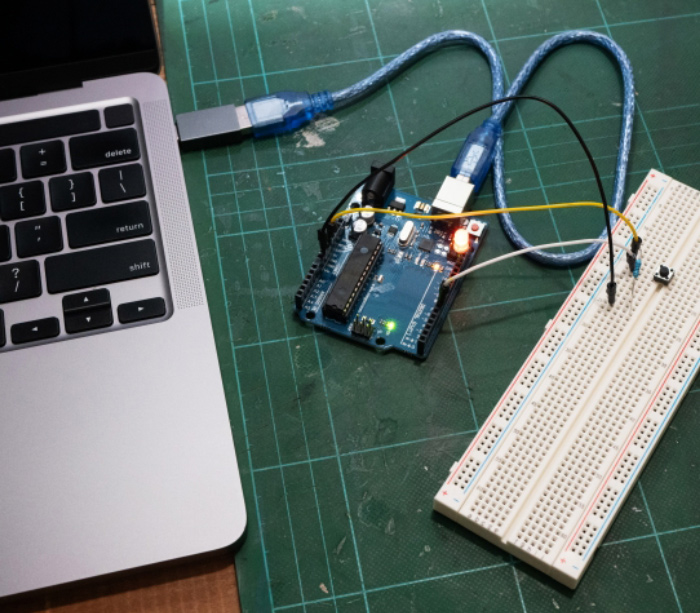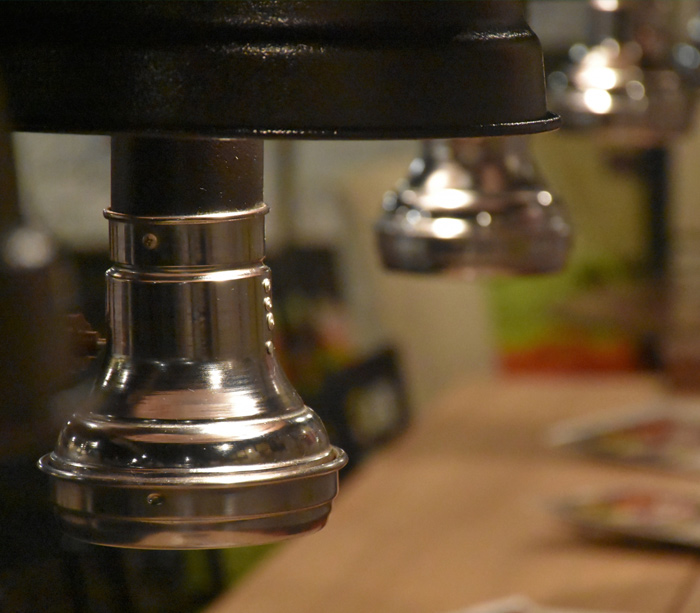
The Internet of Things (IoT), also sometimes referred to as the Internet of Everything (IoE), consists of all the web-enabled devices that collect, send and act on data they acquire from their surrounding environments using embedded sensors, processors and communication hardware.
These devices, often called “connected” or “smart” devices, can sometimes talk to other related devices, a process called machine-to-machine (M2M) communication, and act on the information they get from one another.
Humans can interact with the gadgets to set them up, give them instructions or access the data, but the devices do most of the work on their own without human intervention.
Their existence has been made possible by all the tiny mobile components that are available these days, as well as the always-online nature of our home and business networks.
But this technology allows for a level of real-time information that we’ve never had before. We can monitor our homes and families remotely to keep them safe.
Businesses can improve processes to increase productivity and reduce material waste and unforeseen downtime. Sensors in city infrastructure can help reduce road congestion and warn us when infrastructure is in danger of crumbling. Gadgets out in the open can monitor for changing environmental conditions and warn us of impending disasters.
These devices are popping up everywhere, and these abilities can be used to enhance nearly any physical object.
The potential value is that you can save money on your utility bill by being able to remotely turn off your air conditioner, which you forgot to do before leaving the house. There’s also a convenience factor. Nest can remember that you like to turn down the temperature before going to bed, and can automatically do that for you at a set time.
On a broader scale, it is being used by cities to monitor things like the number of available parking spaces, air and water quality, and traffic.
Finally, there are cloud services, which enable the collection and analysis of data so people can see what’s going on and take action via their mobile apps.
It’s easy, but I would like to introduce our products.
Since it is possible to grasp the peak power usage, it is possible to take measures to save power. In addition, you can centrally manage the amount of electricity in your company.

It enables planned and preventive maintenance based on data with minimal waste.

Since the operation status of multiple vehicles can be checked at a glance, the status confirmation and reporting work between the driver and the operation manager is reduced, leading to improved work efficiency.

Install the temperature sensor and gas detection sensor in the optimum location considering the specifications of the installation duct, and measure in real time.
When an abnormality is determined, a fire will be notified by a patrol lamp or an alarm buzzer.
It is also possible to connect to the exhaust fan circuit and forcibly stop the fan.

An optional CO ㏚ sensor can be used to visualize the conditions that require ventilation.
We will “visualize” the degree of airtightness in the room and inform you of the timing of heat stroke prevention and ideal ventilation.

Power monitoring package does not mean that introduction = energy saving. You can take the first step toward energy saving by utilizing the measured data.

We develop energy-saving equipment and monitoring systems in-house to meet the needs of our customers. Since it is developed in-house, we can offer niche products at low prices and leave after-sales follow-up.
Please feel free to contact us as we will propose the most suitable products that can contribute to customer cost reduction and operational efficiency.

These devices, often called “connected” or “smart” devices, can sometimes talk to other related devices, a process called machine-to-machine (M2M) communication, and act on the information they get from one another.
Humans can interact with the gadgets to set them up, give them instructions or access the data, but the devices do most of the work on their own without human intervention.
Their existence has been made possible by all the tiny mobile components that are available these days, as well as the always-online nature of our home and business networks.
Interconnection
Connected devices also generate massive amounts of Internet traffic, including loads of data that can be used to make the devices useful, but can also be mined for other purposes. All this new data, and the Internet-accessible nature of the devices, raises both privacy and security concerns.But this technology allows for a level of real-time information that we’ve never had before. We can monitor our homes and families remotely to keep them safe.
Businesses can improve processes to increase productivity and reduce material waste and unforeseen downtime. Sensors in city infrastructure can help reduce road congestion and warn us when infrastructure is in danger of crumbling. Gadgets out in the open can monitor for changing environmental conditions and warn us of impending disasters.
These devices are popping up everywhere, and these abilities can be used to enhance nearly any physical object.
Concrete Example of the Workings of IoT
One of the better-known examples is the Smart thermostat. This Wi-Fi-connected thermostat allows you to remotely adjust the temperature via your mobile device and also learns your behavioral patterns to create a temperature-setting schedule.The potential value is that you can save money on your utility bill by being able to remotely turn off your air conditioner, which you forgot to do before leaving the house. There’s also a convenience factor. Nest can remember that you like to turn down the temperature before going to bed, and can automatically do that for you at a set time.
Infinite Uses
As the IoT category expands and the products become more sophisticated, one can envision a scenario where your fitness tracker detects that you’ve fallen asleep and then automatically turns off your TV and lights. Or, before hitting the road, your car could pull up your work calendar and automatically provide the best route to your meeting, or send a note to relevant parties if you’re running late.On a broader scale, it is being used by cities to monitor things like the number of available parking spaces, air and water quality, and traffic.
Smart Sensors
In order for the Internet of Things to work smoothly and excellently, Smart Sensors are needed for the collection of real-time data, which would be sent to a central hub that allows different devices to connect to one another.Finally, there are cloud services, which enable the collection and analysis of data so people can see what’s going on and take action via their mobile apps.
Our IoT products
We are a company full of individuality that can propose total IoT solutions from devices to cloud and construction.It’s easy, but I would like to introduce our products.
EMS(Energy Management System)
It is a system that remotely monitors and controls the amount of energy used, and measures and optimizes the amount of energy used in the building in real time.Since it is possible to grasp the peak power usage, it is possible to take measures to save power. In addition, you can centrally manage the amount of electricity in your company.

EMS(Energy Management System) details
IMS(Industrial Monitoring System)
It is an IoT solution that remotely monitors and controls factories, machines, equipment, etc., and measures and optimizes in real time.It enables planned and preventive maintenance based on data with minimal waste.

IMS(Industrial Monitoring System) details
SKYBird-V
You can see in real time where the car is currently running on the map.Since the operation status of multiple vehicles can be checked at a glance, the status confirmation and reporting work between the driver and the operation manager is reduced, leading to improved work efficiency.

Details of SKY Bird-V
Duct fire early detection system
Duct fire early detection systemInstall the temperature sensor and gas detection sensor in the optimum location considering the specifications of the installation duct, and measure in real time.
When an abnormality is determined, a fire will be notified by a patrol lamp or an alarm buzzer.
It is also possible to connect to the exhaust fan circuit and forcibly stop the fan.

Details of duct fire early detection system
WBGT measurement package
If the WBGT in the room rises, you can take measures such as increasing the air conditioning as soon as possible, encouraging appropriate breaks, and reducing the number of people staying in the room.An optional CO ㏚ sensor can be used to visualize the conditions that require ventilation.
We will “visualize” the degree of airtightness in the room and inform you of the timing of heat stroke prevention and ideal ventilation.

WBGT measurement package details
Power monitoring package
It is a tool for grasping energy saving activities and power usage status.Power monitoring package does not mean that introduction = energy saving. You can take the first step toward energy saving by utilizing the measured data.

Power monitoring package details
We develop energy-saving equipment and monitoring systems in-house to meet the needs of our customers. Since it is developed in-house, we can offer niche products at low prices and leave after-sales follow-up.
Please feel free to contact us as we will propose the most suitable products that can contribute to customer cost reduction and operational efficiency.
